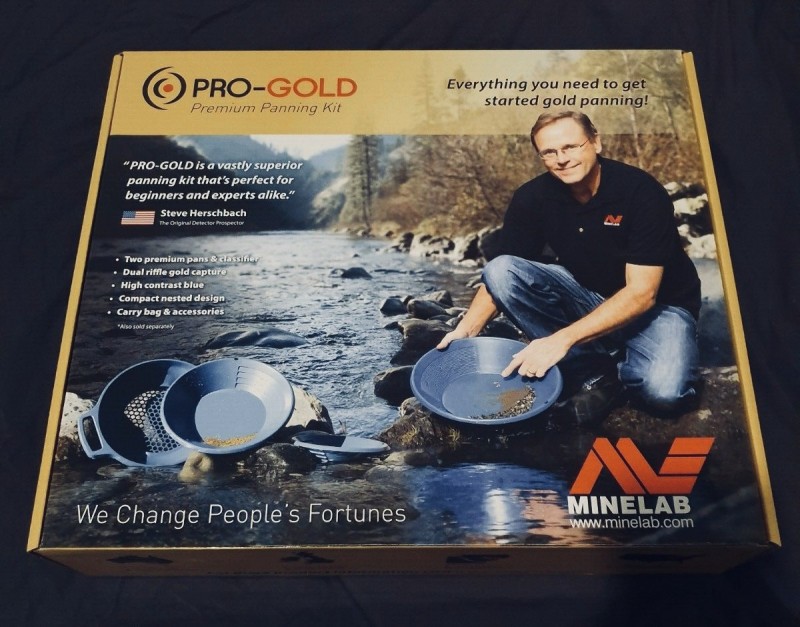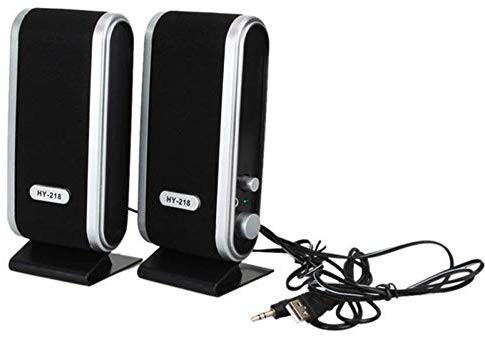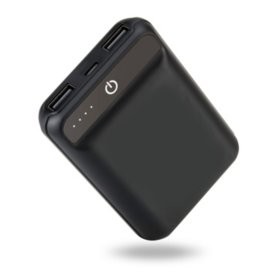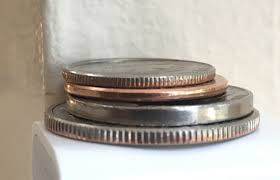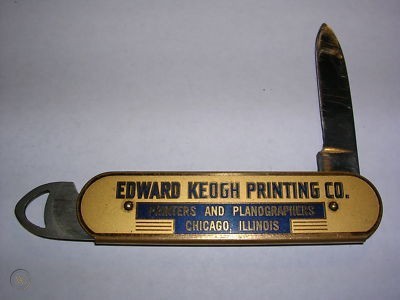-
Posts
5,801 -
Joined
-
Last visited
Content Type
Forums
Detector Prospector Home
Detector Database
Downloads
Everything posted by GB_Amateur
-

Treasure Coast.... Not!(at Least For Me Lol)
GB_Amateur replied to IdahoPeg's topic in Minelab Equinox Forum
Well, if that's not part of an early ship's construction I'd like to know where it comes from. Thanks for sharing, Peg, and I'm glad to see you are in the warm region of the USA. I hope this is just the early part of your finds postings from your winter home. Way to go, Peg! Any silver is a good find in my book. Any old coin is a good find in my book. And you've captured both in spades! Yes, I constantly harp about cleaning, but the reality is that it's a very difficult subject which I have yet to figure out. I'll make that one of my 2020 New Year's resolutions and of course share what I find. -
What do they teach in school these days, or do they even? 😢
-

Found At An Antique Shop In Malaysia
GB_Amateur replied to Juancho's topic in Rocks, Minerals, Gems & Geology
If it were a sphere (it's not) with diameter 35 mm then its density would be 6.4 g/cm^3. So given the concavities it has somewhat higher density than that. This doesn't narrow down its composition, unfortunately. Pure iron is at 7.874 g/cm^3 and pure silver is 10.50 g/cm^3. In between are many metallic elements. When you throw in alloys (combinations of elements) then the possibilities are nearly limitless. 2Valen knows quite a bit about US antiques, but Far Eastern antiques is a whole 'nother ballgame. I hope you've found a valuable item but you have some research ahead of you.... -
In 1987 I was part of a scientific expedition to Prince Albert, Saskatchewan. (We were studying particles from space, not particles from SK.) 😁 A friend along had the idea of flying (our experimental payload was taken by balloon to 120,000 ft = 36 km altitude) some of the new, handsome local $1 coins and then giving them away as souvenirs. I kept mine to this day. As an aside, coins in their first year of mintage tend to be 'collected' by the public. Thus mint state (=uncirculated) specimens are often more common in that year than for later dates. Still, there are some great first year rarities from the 20th Century, and particularly 1916 (1916 Standing Liberty Quarter being the poster child). 1932-D and -S Washington quarters are another example.
-

Second Seminole Indian War Finds
GB_Amateur replied to ColonelDan's topic in Metal Detecting For Coins & Relics
Is this the same site that Tom Dankowski wrote up for Fisher here? -
90% of what I report can be found in the Red Book. My newest copy is 2001, but that seems to be good enough for the US coins most of us care about. PCGS is another good source of info including their unparalleled grading pages. Ebay prices realized give realistic values as a function of condition. It's fun to see what others find, and things like identifying the object and estimating its value seem like a good thing for the finder and the reader. Once I've done that, why not share the info?
-
More great finds for you kac! Sounds like you have a site that doesn't yield easily, but will keep on giving as long as you have access. I've never found a silver 3 cent piece, nor even a (cupro-)nickel 3 cent piece. I do have both in my test pile. It is amazing how tiny the trime is. The first six (1859-1864) years they were cupro-nickel (25-75), but starting in 1864 (note: similar to 1982 where two compositions of Lincolns were minted, the same happened in 1864) the composition changed to 95% copper and 5% tin and zinc. If copper and tin are present (regardless of zinc or not), the technical term is 'bronze'. If no tin but some zinc then 'brass'. So, yes, these are bronze. A couple interesting things about 1864-1982 cents: 1) I've never found how much of each -- tin and zinc -- were present. I suppose it may have varied. But most pre-1982 Lincolns which contain copper are reported with the same composition as the post-1864 Indian Heads with the possible exception of the amount of tin and zinc. So why the different TID? 2) As you mention, usually IH's have a target ID at the high end of the Zincoln range rather than with recent bronze Lincolns, which are up with clad and silver dimes. I suspect that is because of the green scale they build up with decades in the ground. I've found similar green Lincolns with TID's down there. To confirm my hypothesis I need to air test an IH that hasn't come out of the ground. I just haven't done that yet. Anyone else?
-

The Wm08 Module Vs The Wireless Headphones
GB_Amateur replied to RobNC's topic in Minelab Equinox Forum
I use the WM08 module exclusively. Lacky mentioned earbuds and that is my summer configuration. But in cool/cold weather when headphones help keep my ears warm I like the WM08 + Sunray Pro Gold (traditional version, since that's what I have -- can't comment on the CTX3030 version). The volume with the Pro Golds is greater than my other aftermarket headphones (I'm sure there's a reason but I don't know what it is). The White's ProStars and Garrett MS-2's are decent with the WM08 but I prefer the extra volume capapility. Of all the combinations I've listed above the Pro Golds are best at blocking out ambient noise, too. The ML80 headphones that come with the Eqx 800 have built in amplification but the tone range (audio frequency / pitch range) isn't as pleasing to my ears&brain. I can't speak to the latency difference as I've never investigated it. As far as the chord goes, I just let it dangle. I've thought about tying it up but haven't gotten around to trying that. The short chord option of the Gray Ghost NDT's that Chase mentions does sound nice, though. I've never noticed significant drop out when keeping the WM08 in a breast pocket. With line-of-sight I can get 30 m away without dropout. When I turn around (apparently my body is shielding the EM signal) the distance is reduced drastically to a couple/few meters. This argues against keeping it in a back pocket or backpack. Bottom line as always is go what best fits your needs/desires/tendencies. -

There's A Hole In My Bucket List, Dear Liza
GB_Amateur replied to Againstmywill's topic in Metal Detecting For Jewelry
Nice finds! Are those chains silver? I've found a few and figured they were stainless steel, but I really don't know. I never was able to find a '925' or 'sterling', but sometimes those are hard to locate. -

Amplifier & Speaker On The Cheap? Updated
GB_Amateur replied to GB_Amateur's topic in Detector Prospector Forum
Hugh, I think I get what you're saying. But for the Equinox, why not just use the WM-08 wireless module which is even faster than Low Latency ABTX systems? My intentions for use aren't so well crystalized. I'm thinking desert hunting with a PI. I could either plug right into the detector (wired) or (pretty sure this will work) use the Garrett Z-link wireless transmitter+receiver. Note: the Z-link T+R has a built in amplifier, which makes the speaker's amplifier redundant/overkill, or daisy-chainable similar to Phrunt's system. -

Pirate, Looter, Scavenger Or Just Treasure Hunter
GB_Amateur replied to ColonelDan's topic in Detector Prospector Forum
One day? Aren't you famous from this? -
Stunning find, Lunk! Did you use acid on it or did just water clean it up?
-

Aussie Silvers - Lots Of Them!
GB_Amateur replied to Goldpick's topic in Metal Detecting For Coins & Relics
The condition on many of those silver coins (e.g. that 1879 sixpence) is remarkable. Great finds (the site and the coins)! -

Amplifier & Speaker On The Cheap? Updated
GB_Amateur replied to GB_Amateur's topic in Detector Prospector Forum
$10 w/free shipping on US Ebay. If you have some of those, do you mind measuring and posting the weight and linear X 3 dimensions? I'll do the same when my flyer shows up. 50 hrs on normal batteries is probably going to be better in most ways (less weight and longer field life) than my 'solution'. -

Amplifier & Speaker On The Cheap? Updated
GB_Amateur replied to GB_Amateur's topic in Detector Prospector Forum
When people ask me to help them with modern tech I tell them "ask someone who really knows -- don't you have grandkids?" I think Simon is the closest thing we have on this forum to a grandkid. 😜 -
Always good to hear confirmation that my observations are matched by others. Of course disagreement/counterarguments are welcome, too, but maybe not quite as satisfying. 😁 In particular I was wondering if others had seen similar, gross deterioration of 25%-nickel 75% copper. Apparently salt water (which unfortunately attacks even 90% silver) is guilty, too.
-
Yet to find gold in this region of the TID scale with the Minelab Equinox but I have with other detectors (e.g. Minelab X-Terra). It's probably just selective memory but it seems the Equinox has a penchant for ID'ing things right on top of the US 'nickel' coin! Pencil ferrules, beavertails, the internal flap on aluminum drink cans with square tab (why, oh why do they break even those off?!), various pieces of can slaw, some pieces of lead (e.g. certain size fishing sinkers), and even some Northern Nevada hot rocks! If you asked me to make a list 20 items long I'm sure I could do it. Like many of you I often play a game of predicting what I'll be recovering when I see the TID. 12-13 is the US nickel sweetspot but I get fooled at least half the time when I see a clean signal there. Last week I was getting pretty consistent 13-14 and predicted "broken square tab". Out popped a nickel. At that point I hoped it was a silver Warnick, but no such luck. Likely it was (nearly) on edge and the 14 was coming from swinging perpendicular to its edge (along its axis). I never really know until I dig. I, for one, am quite thankful when a previous detectorist ignored the nickel zone. If they were picky maybe they also left me a few Indian Head pennies (typically below most bronze Lincolns and in the aluminum screw cap / high end of Zincoln region).
-
Just ordered these: and paired with one of these portable chargers (for example):: am wondering if it will work prospecting in the US Southwest desert. (If not it won't be the first time I've wasted $10, even this month.) I'll report back when they arrive, but given it's Christmas rush for shippers it may not be until after Christmas. Here's a link to a Google Search which shows several places to buy the above speakers. And just one choice of the USB charger/power-pack of many on the market.
-
From what you post, I see two possible explanations: my first suspicion is masking and the second is target ID drooping. Masking is a truly evil monkey-wrench in the gears of detectors (thanks to Tom Dankowski for first opening my eyes to this). From many posts I've read and from my own experience it seems the XP Deus and ORX and the Minelab Equinox have improved upon (but not solved) that issue in a significant way. I've done a bit of testing of both the Equinox and Fisher F75 Limited ("black") in my backyard test-stand. My ground is rather mineralized as I've found with mineralization readouts by both the F75 and Fisher Gold Bug. It's not quite as bad as what you report, though. My generalized conclusion at this point (and I haven't done exhaustive testing) is that the Equinox has the advantage of holding its target ID as coins get deeper. The F75 in motion all-metal will find good targets deeper but those (known) good targets show up with ferrous target ID's. When I was researching before buying the F75 I read some posts on another forum that seem to ring true in my experience. One was subtle, calling the F75 (at that time, in June 2017) the best VLF for relic hunting. Another complained about the variation in target ID's swinging over good targets. So far my controlled tests agree with those statements. But back to masking. I haven't done enough testing to draw equivalent conclusions on the unmasking abilities of detectors. My subjective feelings from using them in the field is that the Equinox is the best detector I own at dealing with masking (Note: I've never swung a Deus/ORX). I do feel (and more strongly, hope) that there is still room for improvement. P.S. Nice antique miniature farm tractor find!
-
That's what you get for not wearing a Minelab shirt and cap when snapping your submitted photos.
-

Detectorpro Headphone Toggle Size Question
GB_Amateur replied to midalake's topic in Metal Detector Advice & Comparisons
Reading all the posts in this thread, I think your best bet is the 1/4-40 that you posted. -
A couple friends in Louisville invited me down to search a spring on one of their properties. Louisville (https://en.wikipedia.org/wiki/Louisville,_Kentucky), being on the Ohio River, was one of the earlist settlements in the USA west of the Applalachian Mountains, founded in 1778 by Revolutionary War hero William Rogers Clark, better known as the older brother of William Clark of the Lewis and Clark Expedition which explored the Louisiana Purchase (https://en.wikipedia.org/wiki/Louisiana_Purchase) at the commission of Thomas Jefferson. It's likely the spring was in existence well before Europeans arrived but how long it has been visited by humans isn't known. Of course I was hopeful of finding some very old coins and relics. There is currently a catch pool a few square meters in size. I didn't know its depth until I carefully stepped into its murky waters. Fortunately my hip waders were just high enough to keep me dry. The bottom of the pool had a hard (rock?) floor but a layer of mud and decaying organic matter was next and 30+ cm deep. I was swinging (more like probing) the Minelab Equinox 800 with both 6" and 11" coils. Once finding a target I (blindly) felt around with the Garrett Carrot. Searching the pool was difficult and besides a couple electric lights (unknown to the current owner) I surprisingly got no hits. I didn't search the entire pool as it was quite difficult to traverse the mud. I decided to move downstream to a manufactured series of steps (mini-waterfalls). In the very first one I got a 30 TID and was able to recover the metal disk shown in the photo. My first thought (make that 'hope') was that I had found a US half cent (first minted in 1793 and last in 1857). It appeared to be about the correct diameter. Those were made of pure copper which was consistent with the TID. I quickly noted how thin it was, but rationalized that was due to wear. I recall a story my uncle told me from when he was in the Army stationed in Puerto Rico in the early 1950's. He said that the silver coins circulating there at that time were Barber dimes, quarters, and half dollars and had been worn down to literally half their original thickness. I imagined half cents getting that much usage.... I could see no detail, but again, heavy wear can do that. Always skeptical, I wasn't ready to claim victory. The excitement began to fade when my friend pointed out that the edge was reeded. I was pretty sure that USA half cents and cents have never been reeded. As I later found out, reeding was implemented to discourage the unscrupulous from nipping off the edges of coins made with precious metals. Copper didn't qualify as precious. When I got home I measured the diameter (~23.9 mm) and thickness (varying between 1.2 and 1.3 mm). The diameter was just a bit large for half cents (which were minted with three different diameters over their years of production, from 22.0 mm to 23.5 mm). Weight was 3.38 grams. The lightbulb eventually turned on in my head. Equinox TID of 30, appearance of copper, ~1.25 mm thick, and especially telling: reeded edge, Can you now see the light? Here are the nominal size and weight of the pure copper core of a US clad quarter: 24.3 mm diameter, 1.17 mm thickness, 3.78 grams in weight. What still surprises me is the question: what happened to the cupro-nickel top and bottom layers? Unlike Zincolns (copper coated zinc pennies) and the 1943 zinc coated steel pennies, the cladding on modern US coins is rather thick and makes up 1/3 of the coin's weight and thickness. Then I recalled another discovery I had made this fall while hunting one of my local parks: I chose the oldest looking tree I could find (and it was definitely an old hardwood) and started hunting around its trunk. I recovered three coins in different locations but all within inches of the trunk, one a US 5 cent piece ('nickel') which was quite discolored (red) and corroded. I've always thought this was a sign of time in the ground and was hopeful it was an oldie. Imagine my disappointment when I got home and found it was from the late 1990's. How did it get so deteriorated? My hypothesis is that it's the decaying leaves which are more likely to survive (away from lawn mowers) next to the tree's trunk. Apparently the clad layers of this modern quarter had been attacked by the acid from the decaying leaves in the springs catch pool! Even moderately dilute acid can eat away metal if you give it a lot of time to soak, and that coin had spent most of its lifetime bathed in acidic water In one point-of-view, a disappointing find, but another learning experience to compensate. Postcript: I did search the land around the spring a bit and found the following advertising pocket knife with readable wording. I also show a pristine one whose photo I found on the internet. I really don't know the age but the company was in business from the late 1800's at least through the mid-1960's. My WAG is that it is from the 1940's or 50's.
-
Did you test to see if they are magnetic? If not, graphite content is a candidate. My White's TDI (locked at 10 microsecond delay) does not detect a very large graphite rock that my sister found in California, but both the Garrett Carrot and Fisher Gold Bug do. The Gold Bug gives a TID of 40, which is right at the nominal ferrous/non-ferrous boundary. That seems consistent with what you are getting with the Equinox.


